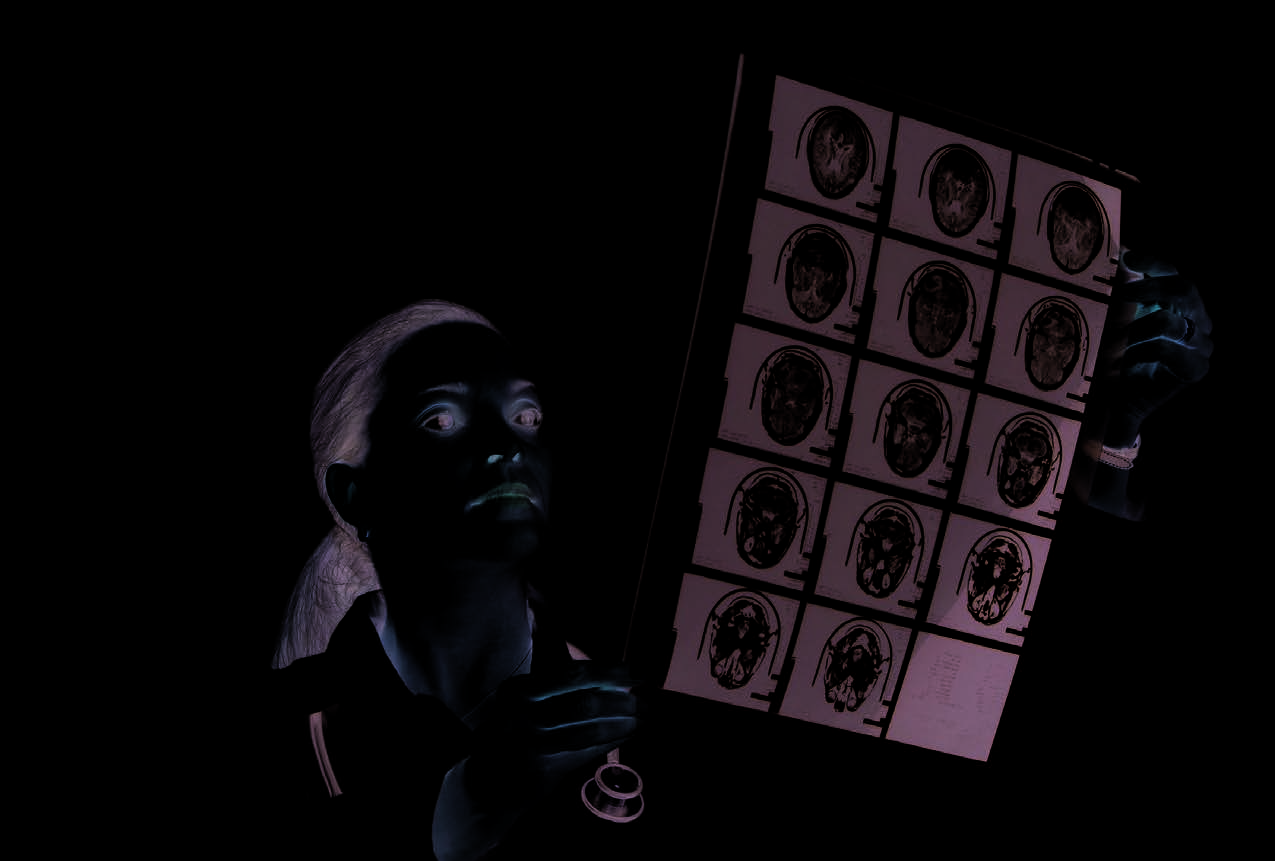
ALZHEIMERS
DISEASE
Unraveling the Mystery
National Institute
on Aging






ALZHEIMERS
DISEASE
Unraveling the Mystery
Preface
Over the past few lead agency for AD research at nizations around the world, and decades, Alzheimer’s the National Institutes of Health many private-sector research, disease (AD) has
(NIH). NIA launched its AD
education, and advocacy groups,
emerged from
program in 1978, and since
the study of AD is moving
obscurity. Once considered a
then, the study of this disease
ahead rapidly. This book explains
rare disorder, it is now seen as
has become one of NIA’s top
what AD is, describes the main
a major public health problem
priorities. Several other NIH in-
areas in which researchers are
that has a severe impact on
stitutes also conduct and sponsor working, and highlights new millions of older Americans
studies on AD.
approaches for helping families
and their families. The National
Thanks to the work of NIH
and friends care for people
Institute on Aging (NIA) is the
institutes, other research orga-
with AD.
TO GET THE MOST OUT OF THIS BOOK
Learn the Basics of the Healthy Brain
Discover What Happens
to the Brain in AD
■ The parts of the brain (pages 10-13)
■ How neurons work (pages 14-16)
■ The hallmarks of AD (pages 21-26)
■ The changing brain in healthy aging
■ The changing brain in AD (pages 27-33)
(pages 17-19)
Explore Cutting-Edge AD Research
Learn about Caregiver Support
■ Looking for causes (pages 36-47)
■ Who are AD caregivers? (page 63)
■ Diagnosing AD (pages 48-53)
■ Reducing the personal costs of caregiving
■ Searching for treatments (pages 54-61)
(pages 64-67)
■ Taking care of mom or dad from a distance
(page 68)
TO LEARN EVEN MORE
Visit NIA’s Alzheimer’s Disease Education and Referral Center website at www.nia.nih.gov/alzheimers.
There, you will find resources to accompany this book, such as downloadable versions of the illustrations and an animation that shows what happens to the changing brain in AD. And while you are there, explore the ADEAR Center’s many other offerings. These include free publications about AD and AD
caregiving, clinical trials information, and a list of NIA-funded Alzheimer’s Disease Centers.
2 ALZHEIMER’S DISEASE Unraveling the Mystery
Table Contents
of
4 INTRODUCTION
3
4 AD: A Growing National Problem
34 AD RESEARCH: BETTER QUESTIONS,
5 About This Book
NEW ANSWERS
36 Looking for the Causes of AD
36 Genetic Factors at Work in AD
40 Other Factors at Work in AD
1
8 THE BASICS OF THE HEALTHY BRAIN
48 New Techniques Help in Diagnosing AD
50 Exciting New Developments in
10 Inside the Human Brain
AD Diagnosis
10 The Main Players
12 Other Crucial Parts
54 The Search for New Treatments
12 The Brain in Action
55 Helping People with AD Maintain Their
Mental Functioning
14 Neurons and Their Jobs
56 Managing Symptoms
14 Communication
57 Slowing, Delaying, or Preventing AD
16 Metabolism
16 Repair
17 The Changing Brain in Healthy
Aging
4
62 IMPROVING SUPPORT FOR
FAMILIES AND OTHER CAREGIVERS
2
64 Research Findings Benefit Caregivers
20 WHAT HAPPENS TO THE BRAIN IN AD
66 Early-Stage AD Support Groups:
21 The Hallmarks of AD
A Vital Source of Help
21 Amyloid Plaques
25 Neurofibrillary Tangles
69 CONCLUSION
26 Loss of Connection Between
Cells and Cell Death
70 GLOSSARY
27 The Changing Brain in AD
74 FOR MORE INFORMATION
27 Preclinical AD
74 Information and Support Resources
28 Very Early Signs and Symptoms
75 Caregiving Support and Services
30 Mild AD
76 Research and Clinical Trials
31 Moderate AD
76 Recommended Reading
31 Severe AD
ALZHEIMER’S DISEASE Unraveling the Mystery 3
Introduction
“Never have I loved my husband of 41 years more than I do today....Though he may not know I’m his wife, he does know that my presence means his favorite foods and drinks are near at hand....I wonder why I can sit daily by his side as I play tapes, relate bits and pieces of news, hold his hand, tell him I love him. Yet I am content when I am with him, though I grieve for the loss of his smile, the sound of my name on his lips.”
This excerpt from Lessons Learned: Shared studying AD so that they can find ways to manage, Experiences in Coping, by participants
treat, and one day prevent this terrible disease.
of the Duke University Alzheimer
Support Groups, gives a glimpse into
AD: A GROWING NATIONAL PROBLEM
what a person with Alzheimer’s disease (AD) and
For many older adults and their families, AD
a family caregiver might experience as the disease
stands in the way of the “Golden Years.” It also
progresses. The gradual slipping away of mind
presents a major problem for our health care system
and memory is frightening and frustrating, both
and society as a whole. AD is the most common
for the person with the disease and for family and
cause of dementia among older people. Recent
friends, and can elicit strong feelings of love, grief, estimates of how many people in the United States anger, and exhaustion.
currently have AD differ, with numbers ranging
AD is an irreversible, progressive brain disease
from 2.4 million to 4.5 million, depending on how
that slowly destroys memory and thinking skills,
AD is measured. But scientists agree that unless
eventually even the ability to carry out the simplest the disease can be effectively treated or prevented, tasks. In most people with AD, symptoms first
the numbers will increase significantly if current
appear after age 60. AD is caused by a disease that population trends continue.
affects the brain. In the absence of disease, the
Our aging society makes AD an especially crit-
human brain often can function well into the
ical issue. A 2005 Census Bureau report on aging
10th decade of life.
in the United States notes that the population
Not so long ago, we were not able to do
age 65 and older is expected to double in size to
much for people with AD. Today, that situation
about 72 million people within the next 25 years.
is changing. Thousands of scientists, voluntary
Moreover, the 85 and older age group is now the
organizations, and health care professionals are
fastest growing segment of the population. This is
all the more important for a neurodegenerative
See the glossary on page 70 for
definitions of boldfaced terms.
4 ALZHEIMER’S DISEASE Unraveling the Mystery
disease like AD because the number of people
begins many years, perhaps even decades,
with the disease doubles for every 5-year age
before symptoms emerge. Discovering ways to
interval beyond age 65.
identify AD in the earliest stages and halt or slow
AD not only affects the people with the disease, its progress will benefit individuals, families, and of course. The number of AD caregivers—and
the Nation as a whole.
their needs—can be expected to rise rapidly as
the population ages and as the number of people
ABOUT THIS BOOK
with AD grows. During their years of AD care-
Thinking about AD leads to questions such as:
giving, spouses, relatives, and friends experience
What causes it? What can be done to cure it or
great emotional, physical, and financial challenges. prevent it? Will I get it? Scientists ask the same As the disease runs its course and the abilities of
types of questions, and this book describes their
people with AD steadily decline, family members
search for answers. It is written for people with
face difficult, and often costly, decisions about the AD, their family members and friends, caregivers, long-term care of their loved ones.
and others interested in AD.
The growing number of people with AD and
This book has four sections:
the costs associated with the disease also put a
heavy economic burden on society. The national
■ Part 1 gives readers some basics about the
direct and indirect costs of caring for people with
healthy brain. Illustrations and text show what a
AD are estimated to be more than $100 billion a
healthy brain looks like and how it works.
year. A 2004 study provided an equally sobering
■ Part 2 focuses on what happens in the brain
picture of the impact of AD. It is estimated that
during AD.
if current AD trends continue, total Federal
Medicare spending to treat beneficiaries with the
Visit the National Institute on Aging (NIA)
disease will increase from $62 billion in 2000 to
Alzheimer’s Disease Education and Referral
$189 billion in 2015.
(ADEAR) Center website at www.nia.nih.gov/
For these reasons, AD is an urgent research
alzheimers/alzheimers-disease-video to view
priority. We need to find ways to manage and treat
an animation that helps this part of the book
AD because of its broad-reaching and devastating
come alive.
impact. We now know that the disease process
ALZHEIMER’S DISEASE Unraveling the Mystery 5










